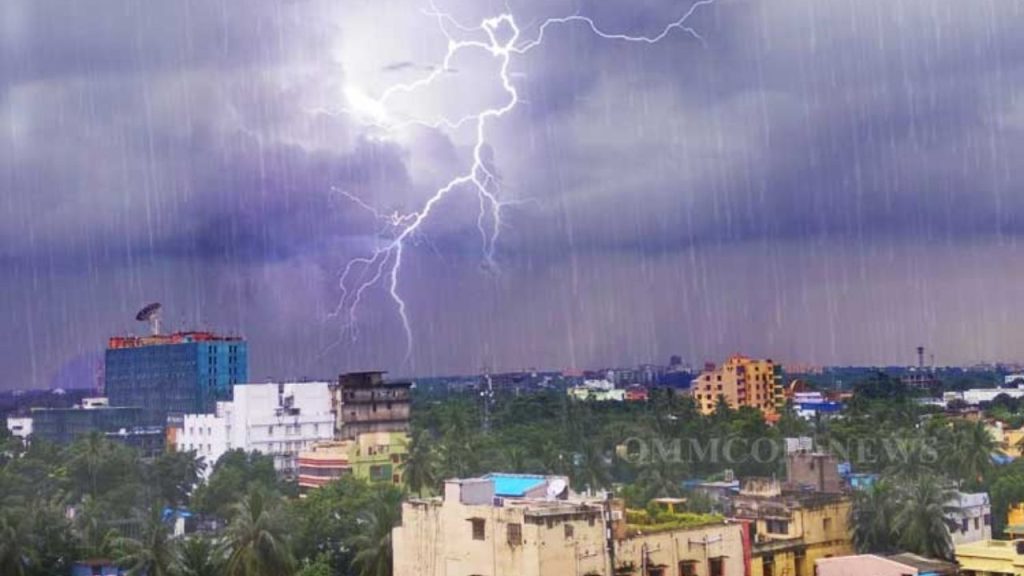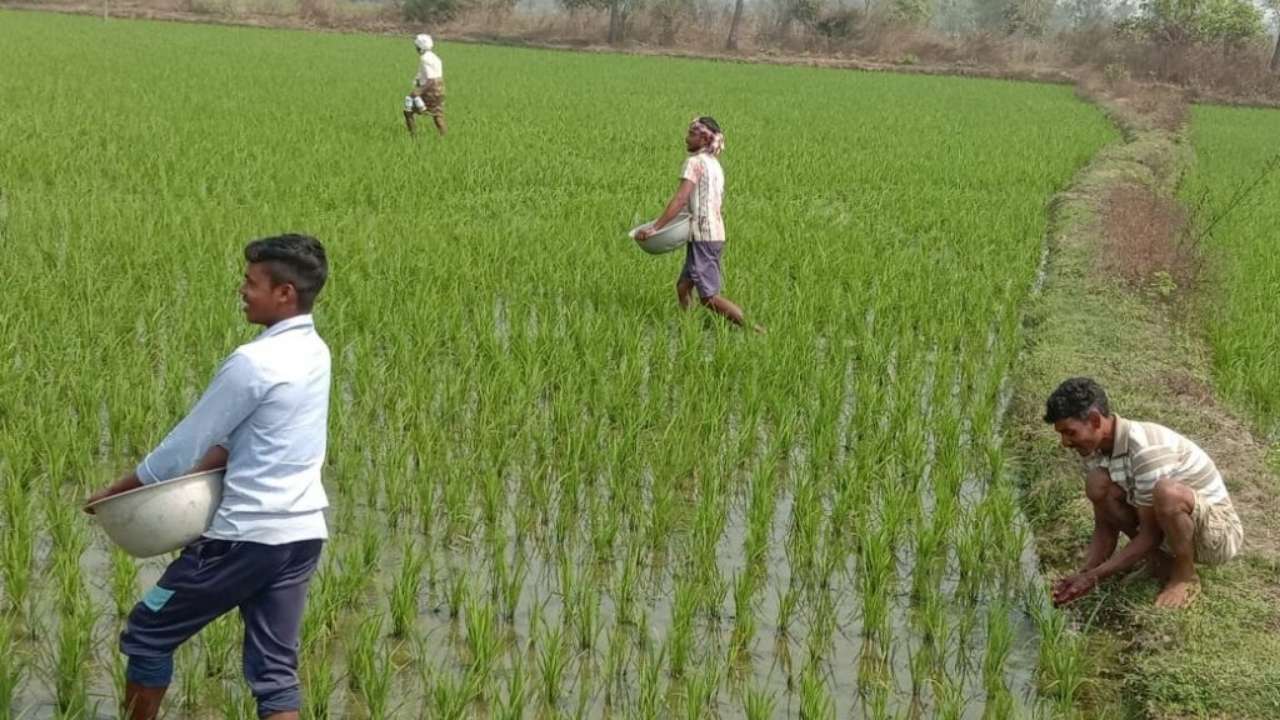As the monsoon season sweeps across India, one region is bracing for what could be an intense few days. Odisha, located along the eastern coast of India, is set to experience significant weather changes starting July 21, 2025. The India Meteorological Department (IMD) has issued warnings for heavy rainfall, thunderstorms, and lightning strikes that will likely affect various parts of the state. The forecast warns of increasing rainfall from July 21 to July 23, making it a crucial time for residents and authorities to prepare for nature’s wrath.

In this article, we’ll explore what’s happening with the weather in Odisha, the expected intensity of the monsoon, safety precautions to follow, and more. We aim to break it down in a way that anyone—whether you’re a seasoned professional or just someone trying to understand what’s going on—can easily grasp and act on.
Monsoon Rainfall to Intensify from July 21
| Key Data | Details |
|---|---|
| Rainfall Warning | Heavy to very heavy rainfall expected from July 21–23 |
| Key Districts Affected | Khurda, Nayagarh, Puri, Ganjam, Gajapati, Sambalpur, Angul |
| Weather Conditions | Thunderstorms, lightning, gusty winds of 30–40 km/h |
| Safety Measures | Stay indoors, secure property, avoid travel in bad weather |
| Flood Risk | High risk of flooding in low-lying areas due to intense rain |
| Forecast Source | India Meteorological Department (IMD) |
As Odisha prepares for heavy monsoon rainfall starting July 21, 2025, residents must stay alert, take precautions, and be ready for the possible challenges the weather may bring. Heavy rainfall, thunderstorms, and the risk of flooding are all serious concerns that could disrupt life in the coming days. By staying informed, securing your property, and following the right safety measures, you can protect yourself and your loved ones from the dangers posed by this storm.
For more detailed forecasts and safety advice, visit the IMD official website.
Why is Odisha Getting Hit Hard?
Odisha is no stranger to monsoons, but what makes this particular weather system so significant is the low-pressure area that is developing over southwest Bihar and east Uttar Pradesh. The shift in the atmospheric pressure system is expected to cause heavy rains over several parts of Odisha starting from July 21. This low-pressure area is also pushing moisture-laden winds from the Bay of Bengal, which is one of the main reasons for the intense rainfall that is likely to affect the region.
In fact, the IMD has issued a Yellow Warning, which signals that people should be prepared for heavy rain and thunderstorms. This is likely to be followed by intense conditions that could lead to flooding, landslides, and other natural hazards, especially in coastal and low-lying areas.
What’s in Store for Odisha?
Here’s a breakdown of the key districts expected to be affected:
Heavy Rainfall Across Several Districts
From July 21 to 23, districts like Khurda, Nayagarh, Puri, Ganjam, and Gajapati are expected to receive heavy to very heavy rainfall. This could lead to flooding in certain areas, particularly along rivers and low-lying regions. Puri, a popular tourist destination, is known for its coastal areas, which are particularly vulnerable to waterlogging and erosion during heavy rains.
Thunderstorms & Lightning
In addition to the rain, Odisha will also experience thunderstorms, which bring strong gusty winds and lightning strikes. The IMD is forecasting gusts at speeds of 30 to 40 km/h, which might lead to flying debris, downed trees, and power outages. This could affect daily life, especially in urban areas such as Bhubaneswar.
Flooding Risks
The most significant concern is flooding, which may occur due to the combined effects of heavy rain and the already saturated ground. Residents in flood-prone areas are advised to stay on alert. Riverbanks could overflow, and flash floods may occur in areas near major rivers. This type of flooding can be life-threatening and can disrupt transportation and essential services for days.
Preparing for the Storm: Practical Advice
As the weather worsens, it’s important to know how to prepare and stay safe. Here are some tips:
1. Stay Indoors During Storms
When thunderstorms and lightning are expected, stay indoors. Lightning strikes are unpredictable and can cause serious injury or death. Avoid open fields, large trees, or any metal structures that can attract lightning.
2. Secure Your Property
Make sure loose objects like garden furniture, trash cans, and outdoor décor are secured. These objects can turn into dangerous projectiles during gusty winds. If you live in an area prone to flooding, take steps to elevate important items and sandbag low areas.
3. Monitor Official Updates
Keep an eye on local weather forecasts and official alerts from the IMD. This is crucial for staying updated on any changes in the weather or additional warnings. Download a reliable weather app or follow news outlets that provide real-time alerts.
4. Avoid Travel During Bad Weather
If you can, stay off the roads during heavy rain. Driving in flooded conditions can be hazardous, as submerged roads can hide dangerous obstacles. If you must travel, take extra precautions and ensure your vehicle is equipped to handle adverse weather.
5. Prepare for Possible Power Outages
Thunderstorms and heavy winds often lead to power outages. Charge essential devices, like mobile phones and power banks, in advance. Have flashlights, batteries, and other emergency supplies ready in case the power goes out.
6. Flood Preparedness
If you live near a river or in a flood-prone area, you should prepare for potential flooding. Know your evacuation routes, and make sure you have an emergency kit with essentials like water, food, and medications.

The Economic and Environmental Impact of Heavy Rainfall
While the immediate concern is safety, it’s important to consider the economic and environmental impacts that heavy monsoon rains can have on Odisha.
Agriculture
Agriculture is a major contributor to Odisha’s economy, and excessive rainfall can disrupt crop production. Farmers in rural areas could see their crops flooded, which would affect both the livelihood of local farmers and the regional food supply.
Infrastructure Damage
Intense rains and strong winds can damage infrastructure. Roads, bridges, and power lines are particularly vulnerable to storm damage. This could lead to disruptions in transportation, communication, and energy supply.
Flooding and Ecosystem Impact
Flooding can also cause long-term environmental damage, particularly in coastal areas where storm surges can lead to soil erosion and the loss of natural habitats. Coastal ecosystems, such as mangroves and wetlands, are at risk of being damaged or destroyed by the heavy rains and rising water levels.
Midnight Canal Flooding Submerges Homes in Bhadrak, 30 Families Affected
Unseasonal Fog and Rainfall Predictions Disrupt Normal Life in Western Odisha
Odisha Braces for Heavy Rain: IMD Issues Yellow Alert for Six Districts Today
FAQs
1. Will schools be closed due to the heavy rain in Odisha?
It depends on the severity of the storm and the local government’s decision. Stay updated with official notifications from schools and the local government.
2. How can I prepare my house for potential flooding?
Elevate furniture and valuables, use sandbags to block doorways, and keep drainage systems clear to reduce the risk of flooding inside your home.
3. What is the best way to protect my electronics during thunderstorms?
Unplug electronic devices to protect them from power surges caused by lightning strikes.
4. Can I go outside during a thunderstorm if there’s no lightning?
It’s still best to stay indoors during a storm, even if there’s no visible lightning. High winds and heavy rain can make outdoor conditions dangerous.






